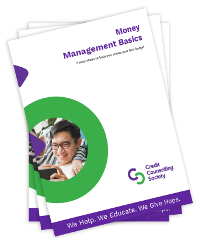 Step 2: Identify Income and Expenses
Step 2: Identify Income and Expenses
Once you have established some goals for your money, it’s time to look at where it comes from and where it goes right now. When we manage our money, it’s easy to get into habits. Some money management habits are positive and allow us to reap rewards later on. Others are negative and can lead us into trouble. Start by making a list of all your household income sources and the amounts. Include everything: wages (after taxes), commissions, self–employment income, child tax benefits, pensions, child maintenance & spousal support, and other regular income.
To make your list, print these Budget Worksheet pages and fill in the column labeled “initial.”
Now it’s time to record your spending. This can be difficult because, for most people, they are clear about where their money comes from, but not as certain about where it goes. Spending includes everything you spend your money on; all of what you may typically think of as “expenses” (utility bills, groceries, transportation costs), but savings for a rainy day, debt payments, life insurance premiums and RRSP contributions are all expenses as well.
If you keep records of family spending, this is the best place to start. Many families don’t record their spending, so you may need to gather spending information from bank account or credit card statements, cheque register books, receipts or bills.
Some of our spending is on a weekly or monthly basis, e.g. fuel for the car, groceries, paying utility bills. There are also seasonal or annual expenses that need to be accounted for in our budget, e.g. gifts, vet bills, holidays, home repair, new glasses or clothing. To calculate monthly amounts for your annual expenses, simply divide the amount that you spend each year on these items by 12.
|
|
Jot all of your spending down, even if it’s just $2 for a parking meter or bottle of water. |
||||
Looking back and identifying expenses is a valuable start. You may, however, have noticed that there seems to be more money going out than you have records for. That’s because every family has spending “leakage” – the little things that aren’t accounted for, but add up.
Tracking Expenses
To be absolutely sure where your family’s money is going, record everyone’s spending for two or three months. You may want to use the Credit Counselling Society’s Monthly Expense Tracker booklet, a spreadsheet, or a money management program. Again, there is no need to make this process more complicated than it needs to be – a notebook and pencil will do. The purpose of tracking everyone’s spending is to find out where all the money is going.
It may not be easy at times or you may forget to record some items. However, tracking is a very important part of identifying your expenses. When you start tracking, you may be tempted to track how you think you should be spending. Try not to do this, because your results won’t accurately reflect your spending. This is the time to learn what you are currently doing with your money – there will be time later to make adjustments and choices when you prepare to put your plan into action (step 4). Do the best you can; you may be surprised by what you find.
Next Step |
|
 |
Step 3: Separate Needs from Wants |
Previous |
|
 |
|
The steps you are going through can also be viewed as a PDF workbook.
You can download a copy, which can be printed and filled out by hand, or
you can download a fillable PDF version, which can be filled out and
saved on your computer.


